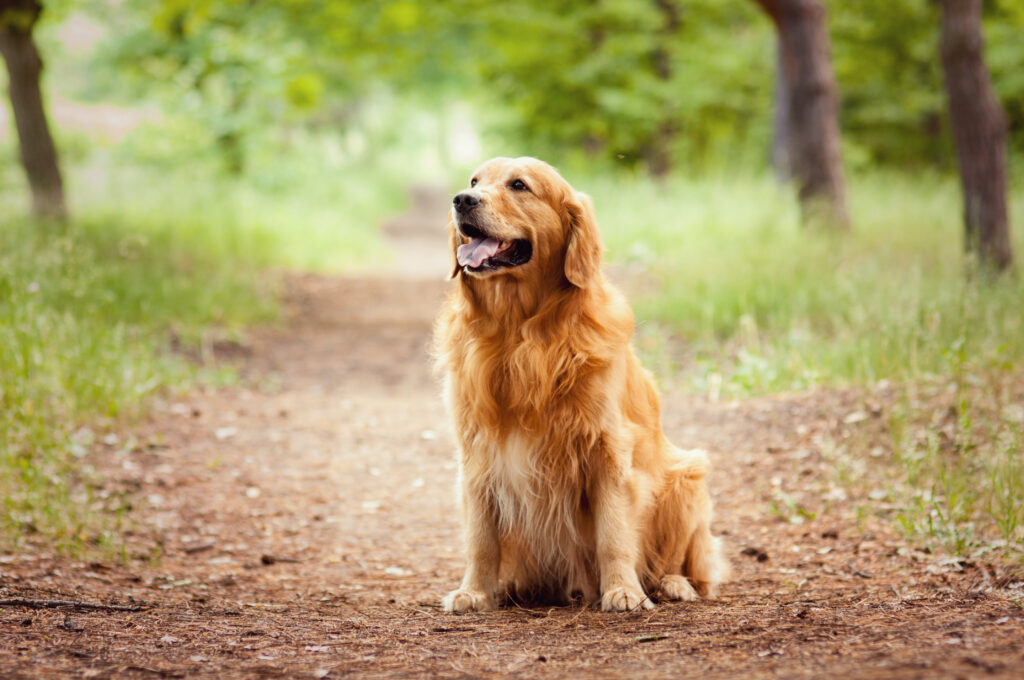Three years ago, after the loss of my childhood lab, I found myself parked outside a modest farmhouse near Fort Collins. Inside waited the puppy who would become Aspen—my golden shadow and unofficial hiking therapist. What I couldn’t have known then was how this Colorado-bred golden retriever would reshape my understanding of the bond between humans, dogs, and landscape.
“She’s different,” my mother observed during her first visit, watching Aspen navigate a rocky stream crossing with surprising confidence. “More… present somehow.” That simple observation crystallized something I’d been feeling but couldn’t articulate. There was something distinctive about this golden girl raised in the shadow of the Rockies.
The Geography of Temperament
When we discuss dog breeding, conversation typically revolves around bloodlines, confirmation, and genetic health screening. These factors matter enormously, but something less measurable also shapes these animals—the silent influence of place.

Colorado Bred Golden Retrievers
“Dogs are environmental sponges,” explains Rachel Martinez, who’s bred working Goldens in Boulder County for fifteen years. I’m sitting at her worn kitchen table while her current pack mills around us. “Their crucial developmental windows coincide with their first experiences of the world. For puppies here, that world includes dramatic weather shifts, elevation changes, diverse terrain—all shaping their nervous systems during formation.”
Martinez’s approach is representative of Colorado’s most thoughtful breeders. Her puppies experience snowfall and summer rain, splash through irrigation ditches, navigate forest paths, and encounter horses and wildlife from safe distances—all before eight weeks of age.
“We’re not just raising dogs here,” she says, pouring more coffee as a golden head rests on my knee. “We’re raising mountain dogs who happen to be Goldens.”
The Confidence Factor
What distinguishes Colorado-bred Goldens isn’t just physical capability but a particular kind of confidence. These dogs approach novel situations with remarkable adaptability, whether facing an unexpected snowstorm or visiting a crowded farmers market.
When I bring Aspen to my brother’s Chicago apartment, what strikes his neighbors isn’t her obedience or even her friendliness—it’s her unshakable poise. While city dogs often display hypervigilance or anxiety when facing environmental changes, she adjusts her expectations with remarkable fluidity.
“Environmental resilience transfers across contexts,” notes veterinary behaviorist Dr. Sam Weston, who splits his practice between Denver and Kansas City. “Dogs raised with positive exposure to environmental variability develop neural flexibility that serves them throughout life. It’s not that Colorado dogs are ‘better’—it’s that variable environments create adaptable brains.”
This adaptability manifests in practical ways. Aspen transitions seamlessly between backpacking trips and office visits. She’s equally comfortable in a tent during thunderstorms or at outdoor concert venues with amplified music. This versatility makes Colorado Goldens particularly well-suited for today’s fluid lifestyles.
Physical Attributes: The Altitude Effect
Beyond temperament, Colorado’s geography shapes these dogs physically. The state’s elevation—with most populated areas sitting 5,000+ feet above sea level—creates subtle but meaningful adaptations in dogs raised here.
Watching Aspen outpace flat-lander dogs on mountain trails, I’ve wondered about the physiological advantages of her upbringing. Cardiovascular efficiency developed at altitude doesn’t disappear when these dogs travel to lower elevations.
“It’s similar to the training effect we see in athletes,” explains canine sports medicine specialist Dr. Elena Kaplan. “Dogs raised at altitude typically develop more efficient oxygen utilization and stronger respiratory capacity. When combined with the Golden’s natural athleticism, you get exceptional endurance.”
This stamina translates to everyday life. Colorado Goldens often maintain puppylike energy well into middle age, with many remaining active hiking companions into their senior years. Their physical robustness makes them ideal partners for active families.
Weather-Hardy Coats
Colorado’s climate—with its low humidity and dramatic temperature variations—also influences coat development. The harsh mountain winters and intense summer sun create selective pressure for weather-resistant coats.
“The undercoat on high-country Goldens is often particularly well-developed,” notes Martinez, running her fingers through her dog’s dense fur. “And the guard hairs tend to have excellent water-resistance. It’s subtle, but these coats typically perform exceptionally well in varied conditions.”
This climate adaptation means less matting when swimming, better insulation during winter activities, and generally lower maintenance needs despite an active outdoor lifestyle.
Finding Your Colorado Companion
The growing reputation of Colorado-bred Goldens has unfortunately led to marketing exploitation. Not every retriever born within state lines benefits from the environmental advantages described here.
When seeking a Colorado Golden, look beyond geography to the breeding philosophy:
- Ask about early environmental exposures and socialization practices
- Meet the parents and evaluate their comfort with novel situations
- Inquire about how puppies are raised before placement
- Choose breeders who prioritize temperament alongside physical health
“The Colorado advantage isn’t automatic,” cautions Martinez. “It requires intentional breeding and raising practices that leverage this environment for developmental benefit.”
The Intangible Connection
Perhaps what makes Colorado Goldens truly special transcends measurable traits. There’s something about these dogs that embodies a distinctly Western spirit—an unforced joy in wide-open spaces, a natural resilience, and an uncomplicated approach to partnership.
When Aspen and I reach an alpine lake after miles of steep trail, she doesn’t collapse in exhaustion. Instead, she surveys the landscape with quiet attention before settling beside me, present in a way that feels almost collaborative. In moments like these, the Colorado Golden reveals its true gift—not just adapting to our adventures, but elevating them through a shared experience of place.
These mile-high Goldens don’t just thrive in Colorado’s landscape; in some essential way, they embody its very character—resilient, friendly, and magnificently suited to a life of everyday adventure.
